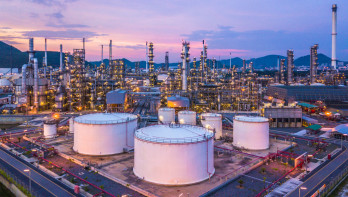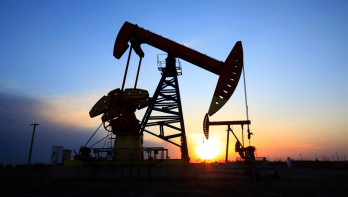Analysis Energy
Gas Price Rises Due to Ceasefire Failure
Now that the Israeli offensive in Rafah seems to have started, the gas price has taken a significant step upwards. Meanwhile, the electricity price is rising as solar panels are slowly but surely taking over from wind turbines.
The gas price has slightly increased this week. On Tuesday, April 30, gas was traded for €29.39 per megawatt-hour. The next day, the price dropped to €28.86. Since then, the price has been gradually increasing. Until Monday, May 6. On that day, the gas price rose sharply and closed at a price of €31.80 per megawatt-hour.
Until Monday, the gas price was relatively stable. The weather is expected to be favorable for the next two weeks. Temperatures are rising to a normal level for the season, but at the same time, a lot of wind is expected. Market expectations are that the gas demand for heating will be almost negligible. Therefore, it is likely that gas reserves will increase in the coming weeks. Currently, the fill level is 62.3%.
Another factor contributing to stability is that the supply from Norway continues to rise. Bloomberg reports that the supply from the country has increased by 5% compared to the first quarter of 2023. However, revenues decreased significantly due to the lower gas price. As a result, Norwegian gas revenues from the European Union roughly halved in the first quarter.
Rafah Incursion Leads to Spike
In recent weeks, hopes of a ceasefire in Israel have brought more stability to the market. A ceasefire would reduce risks for LNG transport around the Black Sea region. However, last night (May 6), those hopes were dashed. Hamas announced its agreement to a ceasefire proposal by mediators Egypt and Qatar, but the Israeli war cabinet unanimously decided not to accept the proposal. According to Prime Minister Benjamin Netanyahu, the proposal does not meet Israeli demands. Meanwhile, Israel has begun airstrikes on Rafah after the army ordered 100,000 Palestinians to leave the area.
Electricity
The electricity price was significantly higher this week. On Wednesday, May 1, the electricity price hit its lowest point of the week at €26.01. Since then, the price has been fluctuating at a relatively high level. Over the weekend, the price did not drop below €60, and on Monday, May 6, the electricity price reached the highest point of the week, at €93.79.
The higher electricity prices are directly related to the increasing dominance of solar power over wind. This transition is typical for this time of year. The days are getting longer while the wind strength decreases. In total, 64.8% of electricity was generated almost for free. The total share of solar energy is 36.5% compared to 28.3% from wind turbines.
Due to this shift, generating energy from renewable sources becomes more unpredictable. During periods with strong winds, it generally blows all day, while the sun shines only part of the day. This results in hours with very low to negative prices and hours with high prices. Consequently, daily electricity prices are generally higher.
€250 Million for Green Hydrogen
Furthermore, the government has taken a step to compensate for this shortcoming of renewable sources. The Dutch government has pledged €250 million in subsidies for green hydrogen. This investment will be made in seven companies. Electrolysers will be used to absorb the surplus capacity of solar panels and prevent shutdowns. The total electrolysis capacity of these projects will be 101 megawatts by 2028, of which 91 megawatts will come from projects in Groningen.




